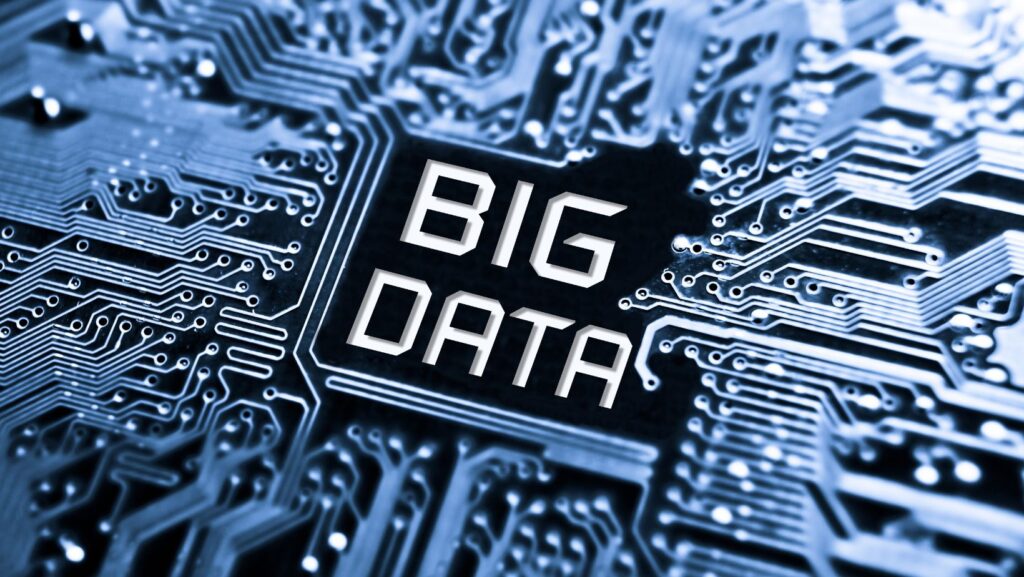In 2025, the digital universe will expand unprecedentedly: data creation is projected to reach 175 zettabytes this year. This explosion of information reshapes industries and drives companies to seek advanced solutions. Enter Apache Spark – an analytical powerhouse. It turns complex data streams into actionable insights in real time. Provided that industries face mounting pressure to stay agile, Spark is setting itself as the go-to technology for organizations determined to thrive in an era of digital innovation. But why are forward-thinking enterprises betting big on Spark this year? Let’s break it down.
Is Big Data Still Relevant in 2025?
The short answer to the question, “Is big data a future?” is ” Absolutely.” The global big data market is anticipated to grow from current $350 billion to $655 billion by 2029; this growth underscores its escalating importance. Companies leverage big data prediction for different reasons: to gain actionable insights, enhance decision-making, and stay competitive. In sectors like healthcare, such analytics has led to significant cost savings and improved patient outcomes. Financial institutions utilize it for fraud detection and personalized services, while retailers optimize supply chains and customer experiences through insight-driven strategies. The pervasive influence across industries highlights its enduring relevance in 2025 and the coming years.
Why Apache Spark Is At The Forefront Of Big Data Innovation
Apache Spark can be called a leader in big data processing due to its robust features. Its in-memory processing significantly accelerates the analysis of information, which makes it ideal for handling large-scale datasets. Spark’s unified engine supports various processing tasks, including batch processing, real-time analytics, machine learning, and graph processing. This capability simplifies complex workflows. Organizations benefit from its scalability by managing growing data volumes efficiently. What is more, Spark’s active open-source community ensures continuous enhancements, keeping it at the cutting edge of technology. Due to these attributes, companies aiming to benefit from the full potential of their data assets use Apache Spark consulting.
Key Trends Shaping The Future Of Big Data
Technological advancements and corporate needs drive the world of data, which evolves at the speed of light. Analytics with AI and real-time frameworks – these big data trends define how businesses use insights for competitive advantage.
Let’s take a look at the five most essential trends below.
Integration Of AI And Big Data
AI and big data are a powerhouse duo. The integration of AI into analytics allows companies to predict outcomes, optimize operations, and make the decision-making process automatic. For example, retail companies use AI to forecast sales demand, and healthcare providers apply it for early disease detection. The synergy will continue to be a key driver of business development.
Real-Time Data Processing
Speed is everything. Gone are the days when businesses could wait hours or days for insights. Real-time processing allows us to analyze data streams as they come in, empowering immediate decision-making.

Industries like finance and e-commerce thrive on instant insights to detect fraud or customize client experiences on the fly. Real-time data processing is no longer a luxury. It’s a must-have.
Edge Computing
The rise of IoT devices created latency issues in sending data to centralized servers for processing. The solution is edge computing, which processes data closer to its source. This approach reduces latency and bandwidth usage. Therefore, it is perfect for real-time applications in the form of smart manufacturing and autonomous vehicles. It will be pivotal in enhancing IoT efficiency.
Data Privacy And Security
Data breaches are becoming more frequent and costly. Given that regulations tighten and public concerns grow, businesses must prioritize robust security strategies. So, it is recommended to invest in encryption, access controls, and compliance frameworks to safeguard sensitive information. Another piece of advice is the development of strong privacy practices – they are essential for building customer trust and staying in line with GDPR regulations.
Cloud-Based Big Data Solutions
The key benefits of such solutions cover scalability, flexibility, and cost-effectiveness. Volumes of information are exploding, so companies can quickly scale their cloud infrastructure to accommodate growing demands. Also, cloud services provide remote access to powerful analytics tools. This enables teams to collaborate and gain insights from anywhere. The cloud is now a cornerstone of modern big data strategies.
The Business Impact Of Investing in Apache Spark
Investing in Apache Spark brings businesses a competitive edge through improved processing and predictive analysis in big data. Its ability to handle diverse workloads enables organizations to facilitate timely decision-making. The scalability ensures that performance remains robust and supports business expansion. Also, its fit with various data sources and integration with machine learning libraries empower companies to effect advanced analytics and predictive models. If you are a technology leader looking to gain a technological edge, the best choice would be to contact reputable firms like Broscorp, and experts will help you unlock the power of your data.
Challenges In Big Data Processing And How Apache Spark Solves Them
This is a fact that businesses face challenges in processing large volumes of information efficiently.
Apache Spark, with its advanced capabilities, offers solutions to many of these issues so that companies can apply the power of big data effectively.
Data Volume And Velocity
Businesses generate loads of information from IoT devices, social media, and enterprise systems. Traditional systems struggle to keep up, which leads to processing delays and missed insights.
How Spark helps: Spark’s in-memory computing and distributed architecture allow it to process vast datasets rapidly. This feature makes it ideal for managing high-velocity streams without compromising speed or accuracy.
Complex Data Integration
Companies often deal with disparate formats and sources, which makes integration a tedious and error-prone process.
How Spark helps: Spark’s powerful APIs simplify data integration by supporting various formats and sources. This boosts the ETL (Extract, Transform, Load) process and minimizes complexity.
Real-Time Processing Needs
Waiting for batch processing isn’t a variant in dynamic industries since timely decisions greatly depend on real-time insights.
How Spark helps: Spark Streaming enables real-time processing by ingesting and analyzing given data on the fly. This allows companies to catch patterns and respond to emerging trends in big data.
Scalability Issues
Traditional systems often face performance bottlenecks. This limits their scalability.
How Spark helps: Spark’s distributed computing model ensures linear scalability. It allows businesses to expand their processing capabilities and maintain high performance at the same time.
Resource ,anagement
Efficiently managing computational resources is vital to optimizing costs and performance.
How Spark helps: Spark integrates with resource managers like YARN and Kubernetes and efficiently allocates resources and schedules tasks. This is how businesses can make the most of their infrastructure investments.
Future Outlook: What’s Next For Apache Spark In Big Data?
Looking ahead, Apache Spark is poised to incorporate advancements that enhance its performance and capabilities. Developments in machine learning integration are expected to facilitate the deployment of complex models and make advanced big data predictions more accessible. Improvements in real-time processing will further enable even faster insights.

Last but not least, enhanced support for cloud-native architectures will facilitate seamless deployment and scaling in cloud environments. These anticipated advancements will solidify Spark’s position as a critical tool in the big data ecosystem.
Why Apache Spark Is A Must-Have For Modern Data Strategies
In 2025, data is a company’s most valuable asset – and Apache Spark is the key to unlocking its full potential. Its in-memory processing delivers lightning-fast analytics – businesses can extract insights in seconds rather than hours. Its ability to handle diverse processing tasks – batch, streaming, and machine learning – on a unified platform makes it a game-changer for business strategies. Spark’s seamless integration with cloud services and machine learning libraries ensures that companies can scale their analytics when needed. Its active open-source community keeps it ahead of the curve. In 2025, competitive advantage depends on how effectively you turn raw information into actionable insights, and Spark stands as the backbone for modern business strategies.
Final Thoughts On The Future Of Big Data In 2025 And Beyond
So, is big data still a thing? It is transforming how the world does business, and its influence will grow stronger by 2025. Companies that embrace advanced processing technologies like Apache Spark will be better positioned in today’s ecosystem. Spark continues to evolve with tighter AI integration and real-time processing advancements, and it will remain indispensable for handling vast amounts of complex data. Businesses that prioritize agility and invest in scalable, powerful tools like Spark will lead their industries, while those clinging to outdated systems will be left behind. The future belongs to those who harness data to its fullest potential – and Apache Spark is the bridge to that future.


